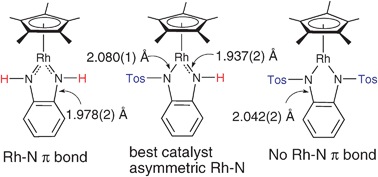Synthesis and structure of “16-electron” rhodium(iii) catalysts for transfer hydrogenation of a cyclic imine: mechanistic implications†
Abstract
Significant Rh–NH π-bonding in formally 16-electron (η5-C5Me5)Rh(XNC6H4NX′) (X, X′ = H or Ts) is shown by structural features and by DFT calculations; (η5-C5Me5)Rh(TsNC6H4NH) is the fastest transfer hydrogenation


 Please wait while we load your content...
Please wait while we load your content...